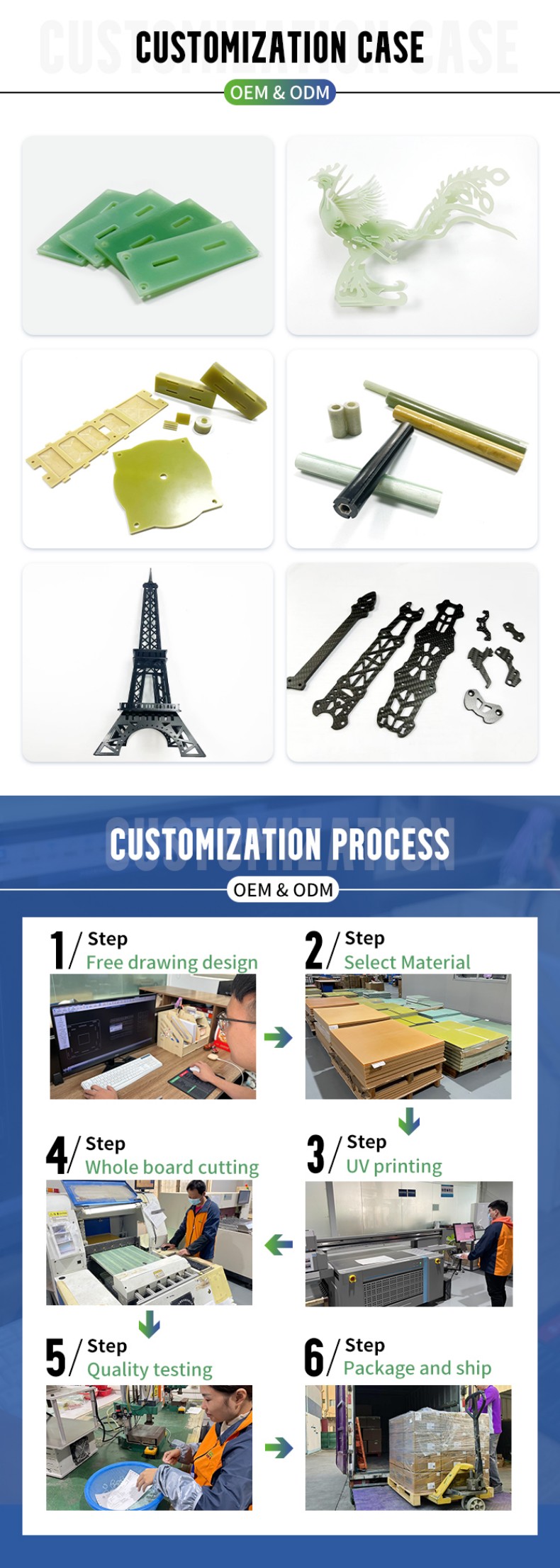Requirements for machining accuracy of machining centers for insulated parts
Insulated parts machining center machining accuracy classification?
1. Dimensional accuracy: that is, the size of the processed workpiece and the degree of proximity to the design size, usually expressed in tolerance levels.
2. Shape accuracy: such as cylindrical roundness, straightness of the plane, the smoothness of the surface.
3. Surface roughness: the surface microscopic unevenness, which directly affects the wear resistance, sealing, appearance quality of the parts.
4. Positional accuracy: refers to the accuracy of the relative position between different parts of the parts, such as the coaxiality, parallelism, perpendicularity, etc. of the hole system.
Insulated parts machining center machining accuracy requirements?
1. Positioning accuracy: positioning accuracy refers to the machining center table or spindle in moving to the specified position of the actual position and the maximum deviation between the command position. For example, the general level of domestic positioning accuracy of about 0.008 ~ 0.010mm, while the international advanced level can reach 0.002 ~ 0.003mm.
2. Geometric accuracy: geometric accuracy is a machining center in the absence of cutting, through static measurement to determine the accuracy of the mutual positional relationship between the machine components, including perpendicularity, straightness, parallelism and so on.
3. Repeat positioning accuracy: repeat positioning accuracy reflects the positional consistency when returning to the same target point many times in the same direction, it is an important parameter to measure the stability of the machine tool, generally require a higher, such as within 0.003mm.
4. Cutting accuracy: cutting accuracy is in the actual cutting conditions, the size of the processed workpiece, shape, surface roughness and other specific requirements, such as milling accuracy can be achieved surface roughness Ra in a few microns level.
5. Shape accuracy and contour accuracy: shape accuracy refers to a single feature such as cylindrical, planar and other geometric shapes and ideal shape of the degree of coincidence, contour accuracy refers to the shape of complex surfaces accuracy.
How to guarantee the machining accuracy of insulated parts machining center?
1、High-precision fixture and support structure to ensure solid and accurate workpiece clamping.
2、Use high-precision mechanical parts and high-quality control system.
3、Use laser interferometer and other high-precision measuring instruments for regular accuracy calibration.
4、Apply adaptive control technology to real-time monitor and compensate the positional error in the machining process.
5、Strict factory acceptance test and routine maintenance according to ISO or other international standards.
The specific requirements of machining center accuracy vary according to different industry applications, workpiece materials, process requirements and other factors, usually in the purchase of equipment according to the technical parameters provided by the manufacturer as well as the specific product requirements to select the appropriate level of accuracy.
Is it better to have higher machining accuracy for insulated parts machining centers?
The machining accuracy of a machining center is not as good as the higher the accuracy, but rather depends on the actual product design requirements and economic benefits. Although high machining accuracy means that the dimensions, shape and position of the workpiece are more precise and can meet higher assembly requirements and functional needs, in many cases, over-pursuing high accuracy can lead to unnecessary cost increases.
For example, if a part in actual use only need to achieve 8 tolerance to meet the function and life requirements, then further upgraded to 5 or even higher levels of precision, will lead to a series of cost increases such as increased machining time, increased tool wear, increased investment in equipment, and these additional costs can not be converted into added value of the product or significantly improve its performance.
Therefore, the principle of selecting the machining accuracy is usually good enough, which is often referred to as “economic machining accuracy”. It refers to the function of parts to meet the premise of reliability and life, the need to achieve the lowest reasonable accuracy level. Designers and production managers should be in full consideration of the design tolerance, production batch, workpiece material, subsequent processing technology and other factors on the basis of a reasonable determination and the pursuit of appropriate machining accuracy, in order to maximize the production benefits.




















